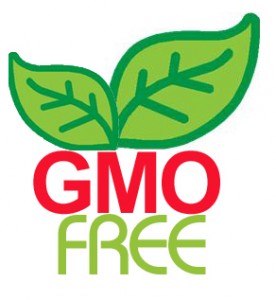 I’m a big fan of my local health food store/grocer. Nature’s Fare Market has a great selection of products and is staffed by well-informed staff, especially in their vitamins and supplements department. In addition, they are involved in the community and regularly offer educational seminars. Another of their great educational tools is their newsletter, The Good Life. In an issue this past summer they included a great explanation of food labels that was so clear and thorough I am reprinting here, with permission. Continue reading
I’m a big fan of my local health food store/grocer. Nature’s Fare Market has a great selection of products and is staffed by well-informed staff, especially in their vitamins and supplements department. In addition, they are involved in the community and regularly offer educational seminars. Another of their great educational tools is their newsletter, The Good Life. In an issue this past summer they included a great explanation of food labels that was so clear and thorough I am reprinting here, with permission. Continue reading
Tag Archives: Non-GMO
GMO-Free Zones in British Columbia
 I’m pleased to learn there is a movement in British Columbia to actively oppose GMO crops. Edible Vancouver reports that earlier this year 51 municipalities supported a motion to make Vancouver Island and Coastal Communities free of genetically engineered crops. Now we just need to make that forward-thinking motion move right on into legislation.
I’m pleased to learn there is a movement in British Columbia to actively oppose GMO crops. Edible Vancouver reports that earlier this year 51 municipalities supported a motion to make Vancouver Island and Coastal Communities free of genetically engineered crops. Now we just need to make that forward-thinking motion move right on into legislation.
Langley and Surrey, each significant agricultural production regions, also have initiatives underway to become GMO-free zones.
You Can be GMO-Free Too
You can easily support the initiative to remove GMO’s from your life without even deviating from your regular routine. The Institute for Responsible Technology offers several easy-to-follow Buy Non-GMO guidelines that allow you to vote with your wallet and improve the nutritional value of your food choices. An added bonus of removing GMO ingredients from you diet? Better health!
There’s also plenty more you can do to ensure that the momentum of “motions” don’t just fizzle and die before they become law. And if a grade eight young woman can do it, I’m pretty sure anyone can. Rachel Parent, age 14, is getting kids involved in actions that will secure their own future via her Kids Right to Know – Just Label It! campaign. Read more about Rachel’s efforts and what you can do to get government focused on this issue in the July 2013 issue of Common Ground, Just Label It.
To GMO or Not to GMO
 To GMO or not to GMO, that is the question.
To GMO or not to GMO, that is the question.
There’s much controversy about genetically modified and genetically engineered food. Do you know what GMO really means and the impact it may be having on your food and health? Here are some of the basics:
A genetically modified organism (GMO) or genetically engineered organism (GE or GEO) is an organism whose genetic material has been altered using genetic engineering techniques. These techniques, generally known as recombinant DNA technology, use DNA molecules from different sources, which are combined into one molecule to create a new set of genes. This DNA is then transferred into an organism, giving it modified or novel genes. Transgenic organisms, a subset of GMOs, are organisms which have inserted DNA that originated in a different species. (Source: Wikipedia)
Genetic modification itself isn’t new. It used to be done via selective breeding. This has always seemed a fairly natural method to cultivate the best of any plant or animal species. Remember grade school science class and Gregor Mendel’s pea plants? It was all about furthering the best, hardiest, tastiest genetic make up possible.
The discovery of DNA, however, has brought far more frightening and unnatural-seeming shifts in genetics, like the splicing together of plant and animal characteristics such as fish and strawberries.
“…the gene from a fish that lives in very cold seas has been inserted into a strawberry, allowing the fruit to be frost-tolerant.” (Source: Disabled-World.com and Mavis Butcher)
What About Choice
Okay, so eating strawberries with fish DNA is weird and may be objectionable to some. What’s more objectionable is that there are no labeling requirements allowing consumers to choose whether they want to eat GM or GE foods or opt out of the experiment. With the jury still out on the benefits of genetically engineered food, I’d like to have a choice thank you very much.
Steps to Avoid GMO/GE Food
There are things you can do to avoid genetically modified foods in your diet.
- Get educated on which foods are typically genetically engineered and choose not to eat them
- Eat 100% organic (sadly, organic may no longer guarantee non-GMO)
- Look for products specifically labeled non-GMO and/or non-GE
- Eat 100% grass-fed beef
- Shop local and know your farmer
We may not yet be able to do away with GMO/GE altogether, but we can surely limit our support of the industry.
October 2010 Designated Non-GMO Month
by Eric Fairwind
Member, Gabriolans for Local Food Choices
Reprinted with permission
This October has been designated the first ever Non-GMO Month.
The Campaign for Healthier Eating is designed to achieve the tipping point of consumer rejection of genetically modified foods in the US and Canada. The campaign begins October 10, 2010 and runs until November 11, 2011. We hope you’ll be part of this North American movement.
Everyone has the right to an informed choice about what they eat. In Europe, all products containing more than 0.9% GMO are labeled by the government. But in the US and Canada, government has obstructed giving consumers information about which food and products contain GMOs, by not allowing the labeling of GMO food. It is estimated that GMOs are now present in more than 75% of the processed foods in the average grocery store.
Many people are concerned about the potential health risks of products made using the technology of genetic modification. In fact, the American Academy of Environmental Medicine has called for a moratorium on GMO foods, long term safety testing, labeling, and education of their patients concerning the consumption of GM foods. They state that several animal studies indicate serious health risks associated with GM food consumption including infertility, dysregulation of the immune system, cholesterol synthesis & insulin , accelerated aging, changes in the liver, kidney, spleen and gastrointestinal system. More independent scientific studies around the world are finding similar startling results.
A large and growing body of scientific research and on-the-ground experience indicate that GM crops:
- Can be toxic, allergenic or less nutritious than their natural counterparts.
- Can disrupt the ecosystem, damage vulnerable wild plant and animal populations and harm biodiversity.
- Increase chemical inputs (pesticides, herbicides) over the long term.
- Deliver yields that are no better, and often worse, than conventional crops.
- Cause or exacerbate a range of social and economic problems such as forcing farmers to pay exorbitant prices for seeds and then paying them poorly for their crops, feeding in to a far-away industrial food system, and causing farmer suicides in India from an inability to pay for GM seeds & chemicals.
- Are laboratory-made and, once released, harmful GMOs cannot be recalled from the environment.
- Degrade the topsoil, destroying valuable nutrients in the soil.
- Pollute groundwater by chemicals used in GM agriculture.
Most vegetables and fruits are not genetically modified, with the exception of Hawaiian papaya (more than 50%), and a small amount of alfalfa, zucchini, yellow crookneck squash and tobacco.
When buying packaged food, be sure to keep a lookout for common GMO ingredients such as: corn oil, corn syrup, corn starch, soy protein, soy oil, soy sauce, lecithin, cottonseed and canola oil. If your package lists one or more of these ingredients, these foods are genetically modified, unless labeled organic or non-GE (non-genetically engineered).
What crops are most often GMOs?
- SOY (89%)* Chocolates use soy lecithin; Breads use soy flour; Shakes use soy protein concentrate; Baby formulas use soy milk.
- CORN (61%)* High fructose corn syrup is found in sodas, cereals, cookies, candy, salad dressings, spaghetti sauces, and 1,000 other products. Baked goods use cornstarch; Vegetable oils use corn oil; Breads use corn flour.
- CANOLA (80%)* Fried products use canola oil; Baked goods use canola oil; many health products use canola oil.
- COTTON (83%)* Chips use cottonseed oil; Fried snacks use cottonseed oil.
*Percentage of GM soy, corn and cotton in the US and GM canola grown in Canada.
For more extensive lists of GM ingredients found in food please visit Seeds of Deception and the Non-GMO Shopping Guide.
Please join us in making safer buying choices and not buying genetically modified foods.
For additional information on the GMO issue, visit the Non-GMO Project.
